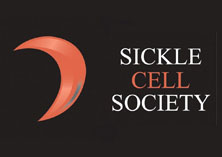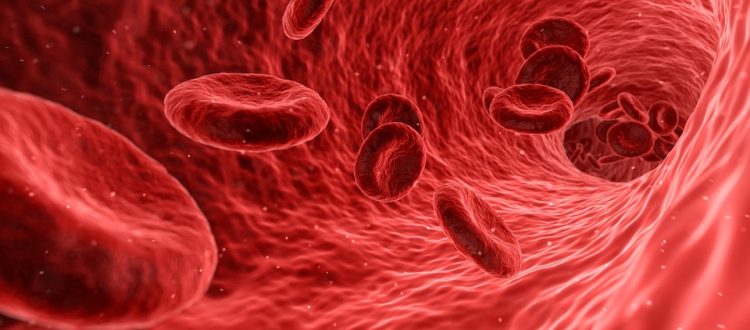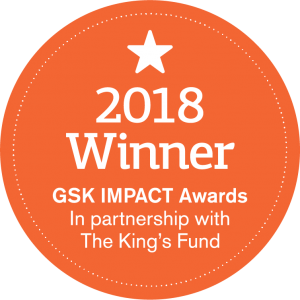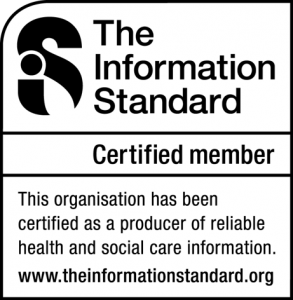Hydroxyurea treatment is transforming the lives of children with sickle cell disease in the Liverpool area.
This is a guest article from Dr Russell Keenan, Consultant Paediatric Haematologist and Lead for Clinical and Laboratory services for Haemoglobinopathies for Liverpool, Merseyside, Cheshire and North Wales.
Hydroxyurea also known as hydroxycarbamide is a medicine that has been around for nearly 150 years. In the early 20th century it was used to treat some rare leukaemias and skin conditions such as psoriasis but it is not often used for these conditions today. Hydroxyurea has been used with increasing evidence in sickle cell disease for almost 25 years now. It is not a new drug that has just been invented. This long history is important as we already know a lot about this medicine from decades of use.
I will review in this article the medical and scientific literature especially looking at recent evidence in children and the long term benefits of taking hydroxyurea for sickle cell disease.
How it works?
Parents may remember that when their child was born they had no sickle cell problems in the first 6 months and very few in the first year. This is because in babies blood there is a special haemoglobin called haemoglobin F (HbF) which protects the sickle haemoglobin (HbS). This is nature’s natural protection against sickle problems. This is very effective as HbF actually carries oxygen around the body releasing it to any sickle blood under stress so preventing the fundamental process that causes almost all of the problems in sickle cell disease.
Hydroxyurea mainly works by reducing the amount HbS made and increasing the amount of this baby blood HbF back towards the levels seen in young babies.
HbF is easy to measure and the doctors and nurses regularly check the levels of haemoglobin F to monitor the beneficial effects.
Have we underestimated Sickle Cell Disease?
In the past there hasn’t really been any effective treatment for sickle cell disease. Therefore, I think doctors and nurses, including myself, have not always talked enough about the seriousness of sickle cell, the long term complications, or the risk of dying from its complications. It almost seemed cruel to just go on about future problems when there was, in truth, very little we could do about it.
Now with Hydroxyurea this is all very different. We now have an effective treatment to prevent sickle problems. While hydroxyurea is not a cure, when taken regularly, it certainly is having a massive impact on the quality of life of patients and families in Liverpool.
What is the evidence?
We have known since the early days of the 1990’s that Hydroxyurea treatment works in adults. It prevents crisis and reduces the frequency of crisis. It also was known early on to reduce the hospital admissions and reduce the need for blood transfusions. Very importantly it was proven early to reduce acute chest crisis which is the commonest cause of death in children with sickle cell disease.
As Hydroxyurea prevents the fundamental disease process of sickle cells from sickling, it was always probable that all complications would be reduced. Clearly it was going to take time to prove long term safety and a beneficial effect on long term (chronic) sickle cell problems. There have been 4 large studies published between 2010 and 2015 that prove that Hydroxyurea should be used in almost all patients from a young age.
These studies are so important I will highlight each in turn.
Steinberg 2010 United States of America
299 adults with sickle cell disease and 17.5 years follow up
Patients on Hydroxyurea benefited with:
43% overall reduction in death
Less stroke, less kidney disease, less liver failure
This study also looked at theoretical concerns about Hydroxyurea which was can it cause cancer or can it cause damage if taken by parents having a baby.
No increased cancer was seen. No abnormalities in babies seen in mums or dads taking hydroxyurea.
No serious side effects seen.
Limitations;- no children were in the study and it wasn’t a formal clinical trial. It was a long term detailed observation of the outcome in a large number of adults.
Baby HUG Trial 2011 United States of America
This is a large American research trial of using Hydroxyurea in all children with sickle cell disease from about 1 year of age.
193 children aged 9-18 months.
Hydroxyurea gave benefits of
52% fewer crisis
Fewer acute chest syndromes
Fewer hospital admissions
Fewer transfusions
No serious side effects seen.
This is the first major trial in young children. The limitations are only short follow up but many further publications have followed this and all have been positive.
Lobo 2013 Brazil
Total 1760 children.
The most severe 267 were put on Hydroxyurea.
The 1493 milder affected children were given standard treatment.
7 year follow up:
Death rate in Hydroxyurea patients 1 in 267 (0.37%)
Death rate in standard treatment patients who were clinically less severe was 82 children (5.5%)
It would have been expected that more deaths would have been seen in the most severe patients.
Hydroxyurea then has prevented more than 90% of deaths from sickle cell disease in childhood.
1 child got cancer and they were in the standard treatment group. No child on Hydroxyurea got cancer.
Le 2015 Belgium
Used the Belgian national registry data of 469 patients over 5,110 patient years.
This large study showed that patients on hydroxyurea had a better survival than patients who were transplanted or did not have disease modifying treatment.
15 year survival with hydroxyurea 99.4% compared to bone marrow transplant 93.8%, P = 0.01 or no disease modifying therapy groups 95.4%, P = 0.04
Limitations. Very few as this is a whole country’s real registry data rather than a research study. The average length of time on hydroxyurea was just over 10 years.
***
I have not selected these studies to show a positive message. All published studies have shown a very positive effect of hydroxyurea. There have been no large studies showing an overall negative outcome. In my view the evidence is overwhelming.
In 2014 the United States National Institutes of Health published Evidence Based Expert Panel Report on Management of Sickle Cell Disease.
This report looked at all evidence relating to all management of Sickle Cell Disease.
One of the strongest recommendations of the report is that every child with sickle cell disease should be offered hydroxyurea from the age of 9 months.
Why is hydroxyurea not being used in the UK as much as it is in North America?
This is a question that I can’t fully understand and maybe this article will stimulate a few replies that will help answer it.
The evidence and experience is overwhelming that Hydroxyurea gives benefits that far outweigh any minor side effects seen.
My personal thoughts are that the benefits can be underestimated by both patients and clinicians.
Hydroxyurea takes time to give the full benefits in the blood and time to get the dose right in an individual. Also, hydroxyurea works by affecting just the blood made in the bone marrow that day. So as a guide any dose started will take months to have a full effect on the blood. It can take up to a year to get the right dose established and see and feel the full benefits.
In conversation with some clinicians and families I think some people are giving up on hydroxyurea far too early after taking for a month or so.
I’ve heard statements including
Hydroxyurea doesn’t work for everyone so no point taking it.
This doesn’t make sense to me as there is no medicine for any disease that works for everyone.
My personal experience is that hydroxyurea works for everyone who takes it every day. The only children I have seen who don’t get an excellent response to how they feel are the children and families who tell me they are not taking it regularly. My experience is if you take hydroxurea it will work.
I’m waiting for a new and even better medicine.
This also doesn’t make sense to me as we might be waiting a long time for an even better medicine and why get ill and deteriorate in the meantime. I would be surprised if we get another medicine in the next 10 years that is as effective as hydroxyurea.
Concerns about side effects.
The studies in the literature report only very minor side effects. My view is that untreated sickle cell disease is a worse disease for a child to have than acute leukaemia. My observations are that life expectancy and quality of life is worse for most children with sickle cell disease compared to children today with acute leukaemia. When treating leukaemia the patients and doctors accept very severe side effects because the benefits outweigh the side effects.
I’ve heard of people with sickle cell stopping hydroxyurea for very minor effects such as nail bed discoloration. It doesn’t make sense to me to risk strokes and kidney failure and pain because of nail bed discolouration.
Concerns about fertility (the ability to have children)
There are real concerns about possible effects on fertility and these have not been fully answered yet in the medical literature.
However the concern about fertility is at least in part a theoretical one. We know that sickle cell disease itself can affect fertility and the evidence that hydroxyurea makes it worse is not really there.
It is known that some medicines used to treat cancer can cause infertility. It seems to me that hydroxyurea is guilty by association as it was used to treat cancers in the past.
Some medicines that treat cancer cause infertility but many in fact do not. There is not good evidence that hydroxyurea causes infertility.
There is some evidence in animals that hydroxyurea can reduce sperm counts and also sickle cell disease on its own can reduce sperm counts.
One study was in rats. Rats given 100mg/kg had no effect on sperm count. This is 3 times the normal maximum dose we give to humans with sickle cell disease. Rats given 200mg/kg had reduced sperm counts which recovered on stopping the medicine. The same study also reported a reduction in sperm counts with a medicine many of us use every day. It was paracetamol.
I don’t hear clinicians or patients getting worried about fertility with paracetamol.
The complication of sickle cell disease that is rarely talked about is impotence in men. It is common for men with sickle cell disease to experience a devastating problem of impotence following sickle crisis called priapism which often starts in childhood. In talking to young men most are more scared of a real risk of impotence rather than a possible risk of reduced fertility.
We know that poorly controlled sickle cell disease can make pregnancy difficult and gives increased risks for women with sickle cell disease and their babies. I hope that in future our current generation of girls treated on hydroxyurea will get to adulthood well and pregnancy will be much less of a concern.
Doctors generally avoid all medicines in pregnancy if possible and the current advice to any woman trying to get pregnant would be to stop hydroxyurea for the pregnancy and the time running up to conception. However there is no evidence in humans at this point that hydroxyurea is harmful to the baby in pregnancy.
Concerns that hydroxyurea may increase the risk of cancer?
There is no evidence in the literature that hydroxyurea causes cancer. The evidence we have so far is that it does not. However it is true that we’ve not given hydroxyurea for 50 years to anyone yet so no one can be certain of a possible very long term effect.
The best measurement is that hydroxyurea reduces death in childhood by more than 90% so my view is it is extremely unlikely that any side effect that we don’t know about yet will outweigh the benefits. Also this is a medicine that has been used in humans for over 50 years. It’s not likely to have any surprises for us in terms of side effects.
Hydroxyurea in Practice in Liverpool
In the last 5 years we have been putting more of our children with sickle cell disease on hydroxyurea.
At Alder Hey in the sickle cell clinic we now have around 70% of all patients with sickle cell disease on Hydroxyurea. We have not seen any serious problems and we have seen many lives massively improve. Hydroxyurea must be respected. It must be closely monitored to ensure the dose is effective and safe for the individual child. It is potentially dangerous if it is taken carelessly or intermittently. It is important to get the best effect that it is taken every day.
We have recently reviewed our patients on hydroxyurea and found that there blood test parameters are much better. On average our patients who take hydroxyurea have HbF levels of over 30%. Many of our patients have blood parameters that are close to sickle trait.
We have many children who have forgotten what sickle pain feels like and don’t need to take any pain killers. Admission to hospital with a crisis is now very unusual with the number of days patients have needed to be in hospital when they are on hydroxyurea is 0.9 days per patient per year. Children are missing very little school.
We have seen sickle problems including mildly abnormal TCD results improve to normal,
We have seen proteinuria, an early sign of sickle kidney damage, get better.
We have seen low blood Oxygen levels improve on hydroxyurea.
We now have no children in Liverpool who are on regular transfusions as all have converted to hydroxyurea.
Parent quote
My son has sickle cell disease, before he was commenced on hydroxyurea he used to have lots of crisis. His consultant suggested this wonderful medicine. Since my son started using hydroxyurea he only have mild crisis which is managable at home, not frequent anymore. His last hospital admission was November 2011 which has been the longest time spent in his life without being admitted all down to the help of hydroxyurea and the good monitoring. Seeing the good outcome from this medicine I will encourage all sufferers to try it and parents to consider it.
At the Liverpool Education day in April 2013 we had an open floor when families were able to share their experiences of hydroxyurea. It was a delight to hear all the families speak so positively and no-one expressed any bad experiences. The perceptions have changed so much that in my clinic now mums bring in their new babies with sickle cell disease and ask me when they can start on hydroxyurea. I have to disappoint them and say I won’t start it until 9 months of age.
In Summary
Hydroxyurea for sickle cell disease
• Long clinical experience over decades.
• Proven saves lives
• Proven prevents acute complications
• Proven prevents long term complications
• Helps nearly all patients (but you have to take it)
• No serious risks
• Minor reversible side effects which mean medicine has to be stopped for a few days then restarted.
• Hydroxyurea works best when taken every day
• Hydroxyurea must be monitored to ensure the dose is the right level for an individual.
• Hydroxyurea is the standard of care for all children with sickle cell disease in North America.
I hope this article stimulates some open discussion amongst patients, families and professionals.
What do you think? Do you have any opinions on hydroxyurea? Anything else you want to know about hydroxyurea that hasn’t been covered? Positive or negative, add your views and questions in the comment box at the bottom of the page. You can also email Dr Russell Keenan Russell.Keenan@alderhey.nhs.uk with any feedback or questions.
Definitions
Priapism is a sickle crisis in the penis of boys and young men. It causes a painful prolonged erection which can damage the tissue that causes an erection permanently.
Fertility is the ability to father children or get pregnant
Impotence is when a man’s penis cannot maintain an erection so an inability to have normal sexual function.
References
2014 the United States National Institutes of Health published Evidence Based Expert Panel Report on Management of Sickle Cell Disease.
https://www.nhlbi.nih.gov/health-pro/guidelines/sickle-cell-disease-guidelines
Pediatr Blood Cancer. 2015 Nov;62(11):1956-61. doi: 10.1002/pbc.25608. Epub 2015 Jul 14.
Survival among children and adults with sickle cell disease in Belgium: Benefit from hydroxyurea treatment.
Lê PQ1, Gulbis B2, Dedeken L1, Dupont S3, Vanderfaeillie A4, Heijmans C1,5, Huybrechts S1, Devalck C1, Efira A6, Dresse MF7, Rozen L8, Benghiat FS9, Ferster A1.
The risks and benefits of long-term use of hydroxyurea in sickle cell anemia: A 17.5 year follow-up.
Steinberg MH, McCarthy WF, Castro O, Ballas SK, Armstrong FD, Smith W, Ataga K, Swerdlow P, Kutlar A, DeCastro L, Waclawiw MA; Investigators of the Multicenter Study of Hydroxyurea in Sickle Cell Anemia and MSH Patients’ Follow-Up.
Am J Hematol. 2010 Jun;85(6):403-8. doi: 10.1002/ajh.21699.
Hydroxycarbamide in very young children with sickle-cell anaemia: a multicentre, randomised, controlled trial (BABY HUG).
Wang WC, Ware RE, Miller ST, Iyer RV, Casella JF, Minniti CP, Rana S, Thornburg CD, Rogers ZR, Kalpatthi RV, Barredo JC, Brown RC, Sarnaik SA, Howard TH, Wynn LW, Kutlar A, Armstrong FD, Files BA, Goldsmith JC, Waclawiw MA, Huang X, Thompson BW; BABY HUG investigators.
Lancet. 2011 May 14;377(9778):1663-72. doi: 10.1016/S0140-6736(11)60355-3.
Br J Haematol. 2013 Jun;161(6):852-60. doi: 10.1111/bjh.12323. Epub 2013 Apr 17.
The effect of hydroxcarbamide therapy on survival of children with sickle cell disease.
Lobo CL1, Pinto JF, Nascimento EM, Moura PG, Cardoso GP, Hankins JS.





